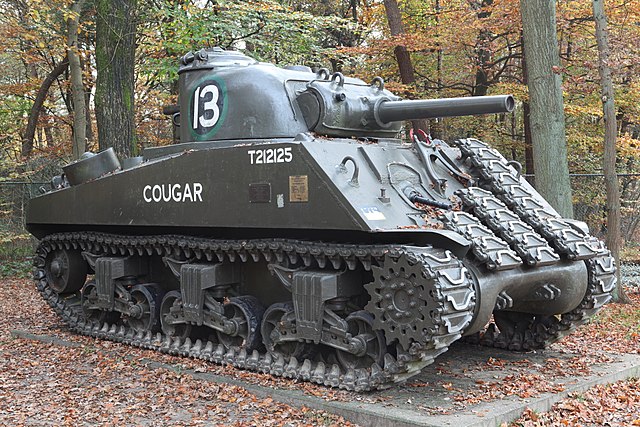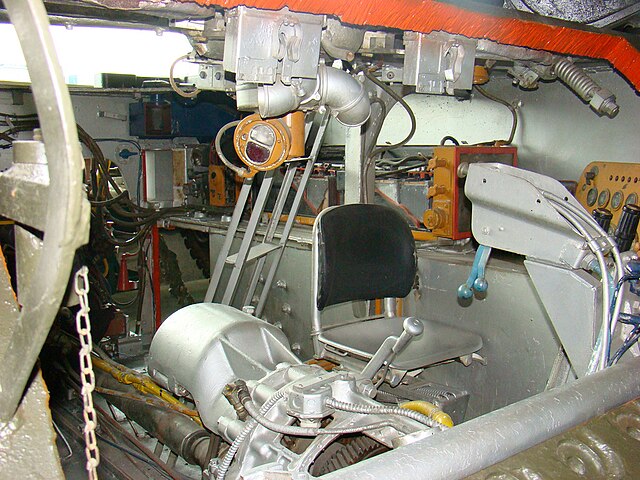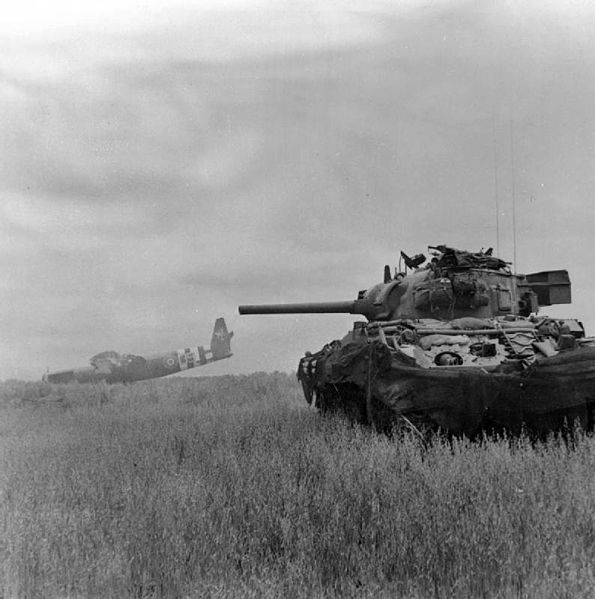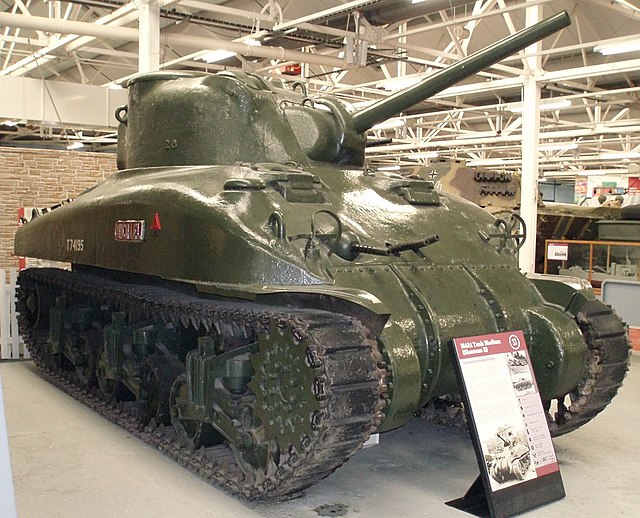The Ford GAA engine is an American all-aluminum 32-valve DOHC 60-degree liquid-cooled V8 internal combustion engine with a flat-plane crank designed and produced by the Ford Motor Company before and during World War II. It features twin Stromberg NA-Y5-G carburetors, dual magnetos and twin spark plugs making up a full dual ignition system, and crossflow induction. It displaces 1,100 cu in (18 L) and puts out well over 1,000 pound-feet (1,400 N⋅m) of torque from idle to 2,200 rpm. The factory-rated net output was 500 hp (370 kW) at 2,600 rpm.
Ford GAA engine
All-aluminum Ford GAF V8 tank engine, next to an M26 Pershing, The Tank Museum
The M4 Sherman, officially Medium Tank, M4, was the most widely used medium tank by the United States and Western Allies in World War II. The M4 Sherman proved to be reliable, relatively cheap to produce, and available in great numbers. It was also the basis of several other armored fighting vehicles including self-propelled artillery, tank destroyers, and armored recovery vehicles. Tens of thousands were distributed through the Lend-Lease program to the British Commonwealth and Soviet Union. The tank was named by the British after the American Civil War General William Tecumseh Sherman.
An M4 (105) Sherman tank with spare track-links welded on its front for additional armor protection, preserved at the Langenberg Liberation Memorial in Ede, Netherlands
Cutaway Sherman showing transmission and driver's seat
A Sherman DD amphibious tank of 13th/18th Royal Hussars in action against German troops using crashed Airspeed Horsa gliders as cover near Ranville, Operation Overlord Normandy, 10 June 1944
The second production Sherman, Michael, displayed at The Tank Museum, Bovington, England (2010)






